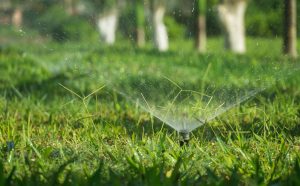Wildlife-Friendly Landscaping: How to Attract Birds Without Inviting Deer
Creating a wildlife-friendly landscape is a beautiful way to connect with nature—especially here in Billings, Montana, where the foothills meet the plains and wildlife is all around us. If you’ve ever looked out your window and wished to see more birds, butterflies, and pollinators in your yard, you’re not alone. But while we welcome feathered friends, many homeowners also want to avoid unwanted visitors—namely, deer.
At Horizon Landscape & Irrigation, we help Billings residents build landscapes that support local ecosystems without turning their yards into an all-you-can-eat buffet for deer. Here’s how you can create a beautiful, low-maintenance landscape that invites birds, not browsing wildlife.
Why Attract Birds?
Birds offer more than just charming chirps and vibrant colors—they help with:
Pest control (insects, spiders, even some garden grubs)
Pollination and seed dispersal
A natural balance to the local ecosystem
Billings is on the migratory path for a variety of birds, including warblers, finches, and even the occasional hummingbird. Providing safe places for feeding, nesting, and drinking water encourages these helpful visitors to return year after year.
Step 1: Choose Bird-Friendly Plants
Native plants are your best bet for attracting local bird species. In Billings, consider:
Serviceberry (Amelanchier alnifolia) – edible berries birds love
Chokecherry – attracts waxwings and robins
Coneflowers, sunflowers, and bee balm – provide seeds and nectar
Juniper or spruce trees – excellent for shelter and nesting
These plants offer food and coverage without requiring constant upkeep.
Step 2: Offer Water, Not a Buffet
Install a birdbath or small water feature to draw in birds without relying on high-maintenance feeders. Place them away from dense shrubs where predators can hide.
Avoid planting soft-stemmed veggies or ornamental plants that deer favor, like hostas or tulips. If you do want a veggie patch, install raised beds with fencing or deer netting.
Step 3: Use Deer-Resistant Plants
Deer are persistent, especially in dry summers, but certain plants tend to stay off their menu:
Russian sage
Lavender
Barberry
Yarrow
Boxwood shrubs
Planting these around your bird-friendly zones can act as a natural barrier.
Step 4: Smart Placement and Landscaping Design
To keep deer away:
Place bird-attracting plants near your home or deck, where deer are less likely to roam.
Use gravel or stone mulch instead of bark mulch, which deer may step on more cautiously.
Install motion-activated lights or sprinklers near deer-prone zones.
Our team often incorporates layered planting—placing taller, less edible plants around the edges to shield tasty plants deeper in the landscape.
Step 5: Avoid Chemical Use
Pesticides, herbicides, and synthetic fertilizers can harm birds and the insects they feed on. Opt for:
Organic lawn treatments
Compost for nutrients
Neem oil or insecticidal soaps for pest management
A healthy, chemical-free yard is safer for everyone—pets, birds, and kids alike.
Making Wildlife Work in Billings
A well-designed wildlife-friendly landscape balances beauty, function, and protection. With Billings’ semi-arid climate and native wildlife, your yard can thrive as both a personal retreat and a mini-sanctuary for birds—without becoming a deer highway.
At Horizon Landscape & Irrigation, we specialize in sustainable, locally adapted landscape design. Whether you’re revamping your entire yard or just adding some bird-friendly features, we’re happy to guide the process.
Read Next: Lawn Care Calendar: Month-by-Month Tips for Billings Lawns




